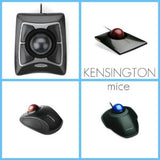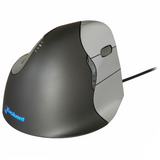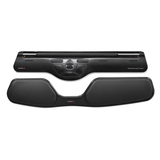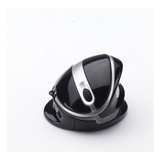Choosing the right ergonomic mouse
You may not realise this, but choosing the right ergonomic mouse can benefit you by reducing pressure on your wrist and fingers, providing other functions that you would normally do on the keyboard, and increase your productivity. Mice come in various sizes and shapes, different sensors and input devices. This guide will provide the information for a more informative choice for your next purchase:
Input Devices
Like keyboards, mice have various different input device methods, from PS/2, USB, Wireless Infrared (IR), and Bluetooth. PS/2 is very rarely sold on newer mice models as it is an older connection method, and USB is a lot faster in terms of providing information from the mouse to the computer. If purchasing a USB-cabled mouse, make sure the cable will be long enough to reach from your computer to your desk without stretching the cable and providing resistance when you use the mouse.
Wireless and Bluetooth mice are similar in that they both require batteries (although some models have a battery life of 8 months or more), and give you more options for mouse placement. Wireless IR has a limitation of line of sight of 1.5 metres, whereas Bluetooth has a range between 10-100 metres and does not require line of sight.
Sensors
The different sensors available in mice are roller ball, optical, and laser. Roller balls are found in old mice and should be avoided as they are very slow compared to optical and laser, and pick up lint on the roller ball, and cause drag. Optical and laser sensors are very similar however you will find you will require a lot less movement when using a laser mouse as they are 20 x times more responsive than standard optical mice.

Sizes and shapes
As you may have noticed, mice now come in a variety of sizes and shapes. Gone are the days when you had to fit the hand around the mouse, now you can find a mouse to fit your hand.
Look for a ergonomic mouse that sits comfortably in your hand and that does not stretch your fingers, is not too high to cause overextended curvature of the hand, or that your fingers have to move too much to reach the scroll wheel. Also make sure the mouse is the same orientation as your hand (i.e. left-handed, right-handed, or ambidextrous), as you may not be able to access the special functions buttons on the mouse.
Mice are now available in vertical, joystick, or trackball mice. A vertical mouse helps move the underside of your wrist away from dragging against surfaces, reducing the risk of RSI and Carpel Tunnel Syndrome. Joystick mice lift your wrist further away from dragging, but are only available for right-handers and do not have a scroll wheel function.
Trackball & Trackman wheel mice reduce arm movement (make sure the wrist is not pressing against hard or sharp surfaces), and operated either with your fingers (Trackball Marble Mouse), or via your thumb (Trackman Wheel Mouse). Even though they help protect the wrist, they can cause excessive strain on your fingers and thumb as they are used more vigorously for controlling the device.
The newest type of ergonomic mouse is the Roller Bar Mouse. Our range allows you to use a mouse directly in front of your keyboard which prevents you from having reach far to the side of keyboard. It is suitable for people with neck and shoulder issues.
Further Research
The Australia Government Job Access Website features more information about the importance of an Ergonomic Mouse as well as features the video which can be found below:
Ergoport is more than happy to discuss the best ergonomic mouse options for you. Give us a call at 02 9929 8447, email at enquiries.mail@ergoport.com.au or visit us at our North Sydney showroom.


